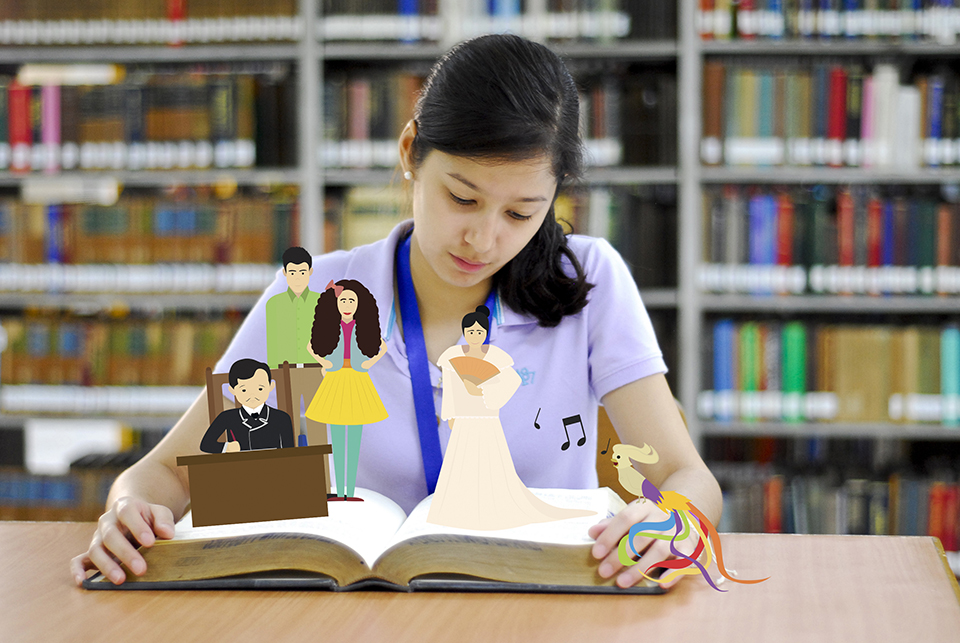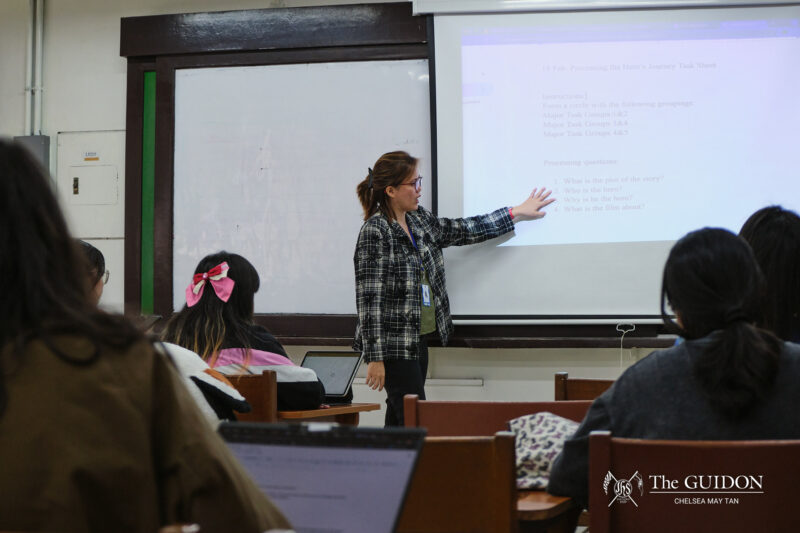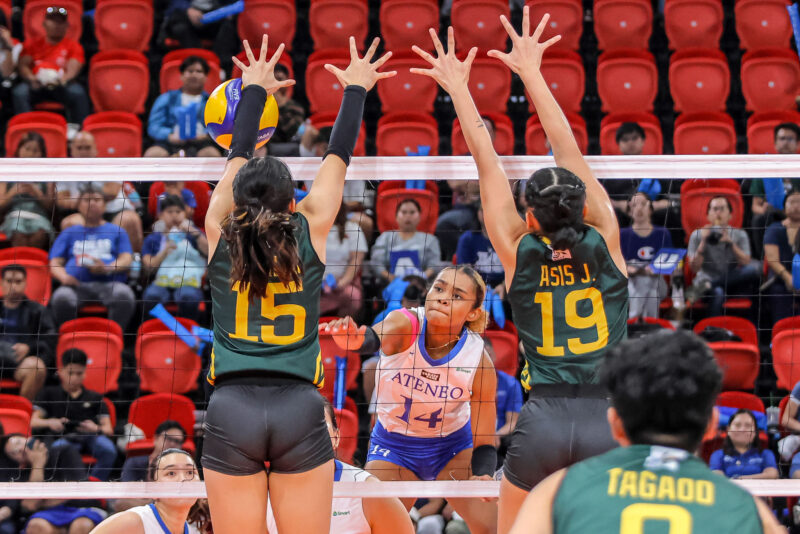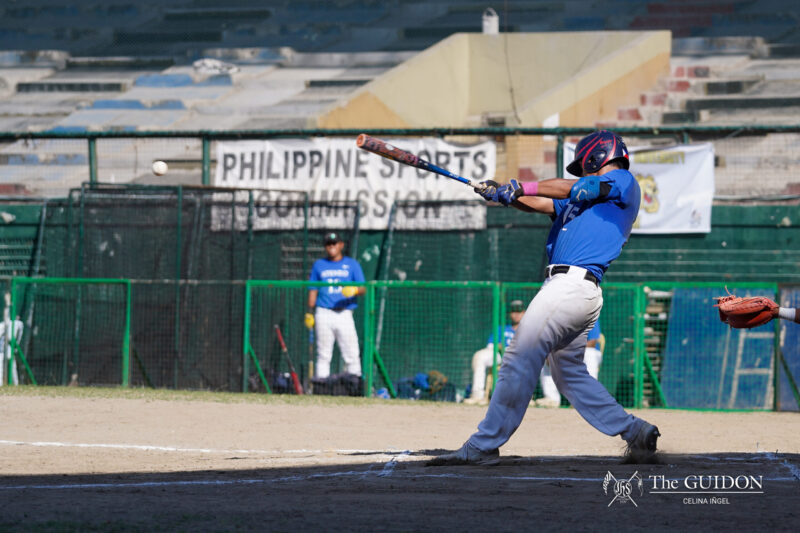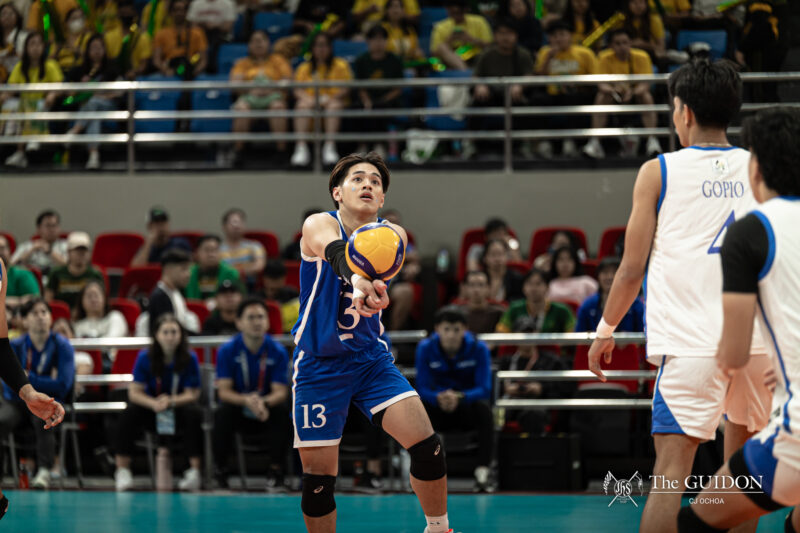“The Ateneo Way” is for students “who wish to be in touch with what it means to be Filipino and seek to deepen themselves with the richness of the Filipino culture.” These are the words of former Director of Admission and Aid Nemesio S. Que, SJ on the Ateneo website.
Although the Ateneo “seeks to identify and enrich Philippine culture” per its vision-mission statement, the presence of the Filipino culture on campus is questionable.
The Filipino Department requires all students to take only three Filipino courses as part of the core curriculum on the appreciation of Philippine literature, while the English Department requires four English courses. The Filipino Department offers only three Filipino programs, while the English Department offers five English ones.
Matanglawin, which publishes everything from discussions of current socio-political events to student-written Filipino literature, is the only all-Filipino publication in the Ateneo. Considering the ever-growing count of official and unofficial English publications in school, it seems that Filipino has been handed the short end of the stick.
“Wika Natin ang Daang Matuwid (Our Language is the Right Way)” is the theme of this year’s Buwan ng Wika, the Philippines’ annual month-long celebration of the Filipino language. Every August, elementary schools and high schools throw fiestas and native costume contests—all to remind students of their cultural roots. The Filipino Department plans on holding a series of talks and contests this year to celebrate the Filipino language and culture as a community.
Atenean perception
“’Yung literatura ng mga Pilipino, hindi siya kompleto kasi nababasa lang natin ang mga literaturang sulat sa Pilipino (Filipino literature isn’t complete because we can only read literature written in Filipino),” says political science sophomore and Matanglawin member Ray John Santiago.
Information design junior and Matanglawin Content and Research Editor Den Noble agrees with Santiago. “Paano ‘yung ibang dialect (What about the other dialects)?” she asks.
Noble explains that the Philippines has over 120 languages, of which there are different dialects, yet students are required to learn the Filipino language alone. “Ang lawak-lawak ng buong Filipinas, ang yaman-yaman natin, pero ang literatura namin ay nakakulong lang sa depinisyong iyon (The Philippines is vast and rich, but our literature is confined to just one definition),” she says.
Diane Agujo, a sophomore management major, says that Filipino literature was never the focus of her science high school’s curriculum. She has always had a “limited understanding” of the subject. English, science and math were always at the top of her list, considering teachers would encourage students to have “that global mindset.” She added, “It seems that younger generations today don’t appreciate Filipino literature anymore because they don’t appreciate the Filipino culture, either.”
“Filipino literature really is often neglected by the current generation,” observes management sophomore Gary Galang. He says he is not content with the way Ateneans perceive Filipino literature, considering students sometimes “lack nationalism and avoid Filipino whenever they can.”
Matanglawin members Santiago and Noble both agree that Filipino students should be proud of their mother tongue. Santiago wishes that others would appreciate the Filipino language, as it is always changing. “Malalim din ang lenggwaheng ito, na kaya niyang tumapat sa Ingles (This is a profound language, too. It can even be ranked alongside English),” he says.
When asked if the Filipino Department of the Ateneo could do anything to change the student perception of Filipino literature, Noble said that the Ateneo should encourage nationalism by integrating Filipino with other subjects as well.
Filipino literature today
Filipino literature, as with Filipino culture in general, has undeniably undergone marked changes over the years. Take Filipino poetry, for instance. Gone are the days when the awit and korido were the trend. Like their Western colleagues, Filipino writers of the last half century or so embraced less formal forms—free verse and spoken word poetry, to name a few.
Not only are today’s writers freer to write how they want to, they are also freer to write what they want. Traditionally, themes like homosexuality and lust were off-limits when portrayed contrary to Catholic views. Now, an increasing number of audacious works speak of them in another light. Even newer movements like postmodernism—which emphasizes self-consciousness and fragmentation of thought—have found their way into Filipino novels. Khavn de la Cruz’s Himagsikan ng mga Puno, for example, combines both poetry and verse into a single narrative.
Like José Rizal’s novels, modern Filipino literature not only describes but often also critiques contemporary life. It reminds us of the societal defects—poverty and moral corruption, to name a few—that hound us to this day.
Noble agrees. “Napakamagandang instrument nitong wika sana para magbigay boses sana sa mga nagmamalasakit (Filipino is a fitting instrument to give sympathizers a voice).”
Despite this progress in terms of form and content, Filipino literature still faces fundamental issues. According to Santiago, a sense of incompleteness pervades Filipino literature, something he relates to the fact that the Filipino language itself still lacks finality. Case in point: The ongoing Pilipinas/Filipinas debate.
For Noble, modern Filipino literature also fails to capture the diversity of our culture. “Our knowledge of Filipino literature is either it’s in Tagalog, or it’s written by some Filipino born in the Philippines,” he comments in a mix of English and Filipino, referring to how the Filipino identity is limited to just one race, language and place. “It’s not enough.”
Both Santiago and Noble also lament that the most popular Filipino literary works today are all not written in pure Filipino.
Santiago notes that Filipino literature written in English fare better than those written in Filipino, citing the popularity of romantic pocketbooks and love stories, most of which are written in the vernacular. “It’s required to be in Taglish,” he says.
Noble mentions Bakit Ka Hindi Crush ng Crush Mo?, Ramon Bautista’s hit humor book on love and relationships, as an example of how today’s Filipino books are often made to cater to popular tastes rather than preserve and showcase the Filipino language.
The future
Undoubtedly, many of the trends seen today in Filipino literary thought will continue in the near future. Our culture tends to absorb aspects of other cultures—American comic book heroes and Korean pop music, for instance. As long as that assimilation continues, so will Filipino literature continue to evolve and reflect that same trend.
The information revolution will likewise be an influential force in shaping the future of Filipino literature—the rising popularity of e-books is testament to that. Amazon now allows authors to self-publish not only e-book versions of their books, but print and audio versions as well. Such advances are only beginning to create a shift in the literature of the west, but they stand a good chance of producing similar effects here in the Philippines.
However, the challenge of inspiring students to appreciate local literature still remains. After all, technology makes it only a little easier to understand the intricacies of a Tagalog poem or a Palawan epic.
Noble encourages students to give Filipino a chance, however. “Gustuhin niyong kilalanin ‘yung wika niyo, kultura niyo, ‘yung bansa na kinalakihan niyo (You must want to learn your language, your culture, your country where you grew up).”
He continues, “Huwag kayong makontento sa ganoon [sa pagiging conyo] kasi masmayaman ang wika natin. Napakayaman ang wika natin para lang limitahin natin sa pagkaconyo (Don’t be content with that [speaking in conyo], because our language is far richer than that. It’s too rich for us to just limit it to conyo speak).”

